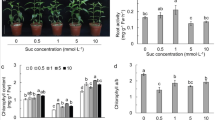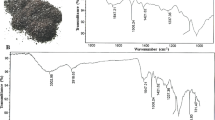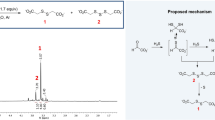Abstract
IT has been inferred from feeding-experiments that cress seedlings1, and also pea and mung bean mitochondria2, are capable of converting L-galactono-γ-lactone into L-ascorbic acid. Similar results were obtained with mitochondria from cabbage leaves and cauliflower florets, and a relatively specific L-galactono-γ-lactone dehydrogenase was isolated from the latter3. The results (Table 1) confirm that this system may not be uncommon in the higher plants ; Sphagnum, Spirogyra and Psalliota‡ gave inconclusive results. The figures in Table 1 are either the mean of duplicate estimations, or are taken from single, extended experiments which show how the concentration of ascorbic acid in the tissue varies during the period of feeding. Fig. 1 shows the results of one such extended experiment with parsley, in which the concentration of ascorbic acid in the laminæ fed with the lactone rose, during a period of 190 hr., from 1,582 to 12,010 mgm./100 gm. dry-weight, that is, to approximately 12 per cent of the dry weight. During the same period, the value for the controls in de-ionized water fell gradually to 1,120 mgm./100 gm. dry weight, and at this time the experimental laminæ possessed more than ten times the concentration of ascorbic acid in the controls.
This is a preview of subscription content, access via your institution
Access options
Subscribe to this journal
Receive 51 print issues and online access
$199.00 per year
only $3.90 per issue
Buy this article
- Purchase on Springer Link
- Instant access to full article PDF
Prices may be subject to local taxes which are calculated during checkout
Similar content being viewed by others
References
Isherwood, F. A., Chen, Y. T., and Mapson, L. W., Biochem. J., 56, 1 (1954).
Mapson, L. W., Isherwood, F. A., and Chen, Y. T., Biochem. J., 56, 21 (1954).
Mapson, L. W., and Breslow, E., Biochem. J., 68, 395 (1958).
Loewus, F. A., Finkle, B. J., and Jang, R., Biochim. Biophys. Acta. 30, 629 (1958).
Finkle, B. J., Kelly, S., and Loewus, F. A., Biochim. Biophys. Acta, 38, 332 (1960).
Loewus, F. A., Jang, R., and Seegmiller, C. G., J. Biol. Chem., 232, 533 and 505 (1958) ; Biochim. Biophys. Acta, 23, 205 (1957).
Author information
Authors and Affiliations
Rights and permissions
About this article
Cite this article
JACKSON, G., WOOD, R. & PROSSER, M. Conversion of L-Galactono-γ-lactone into L-Ascorbic Acid by Plants. Nature 191, 282–283 (1961). https://doi.org/10.1038/191282a0
Issue Date:
DOI: https://doi.org/10.1038/191282a0
This article is cited by
-
Importance of the l-galactonolactone pool for enhancing the ascorbate content revealed by l -galactonolactone dehydrogenase-overexpressing tobacco plants
Plant Cell, Tissue and Organ Culture (2009)
-
Ascorbic acid in cultured tissue of briar rose, Rosa rugosa Thunb
Plant Cell Reports (1983)
Comments
By submitting a comment you agree to abide by our Terms and Community Guidelines. If you find something abusive or that does not comply with our terms or guidelines please flag it as inappropriate.



